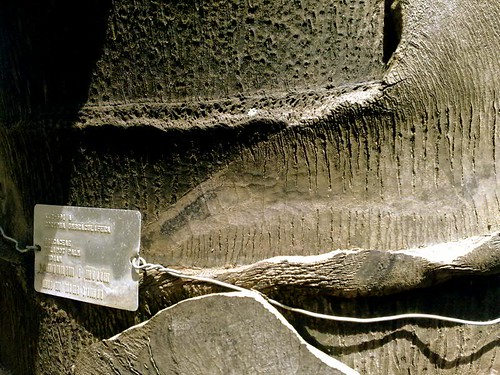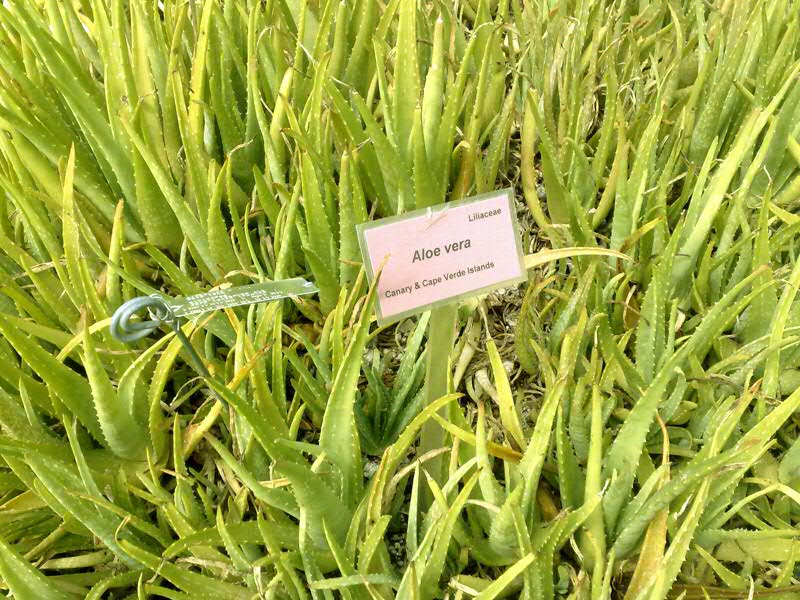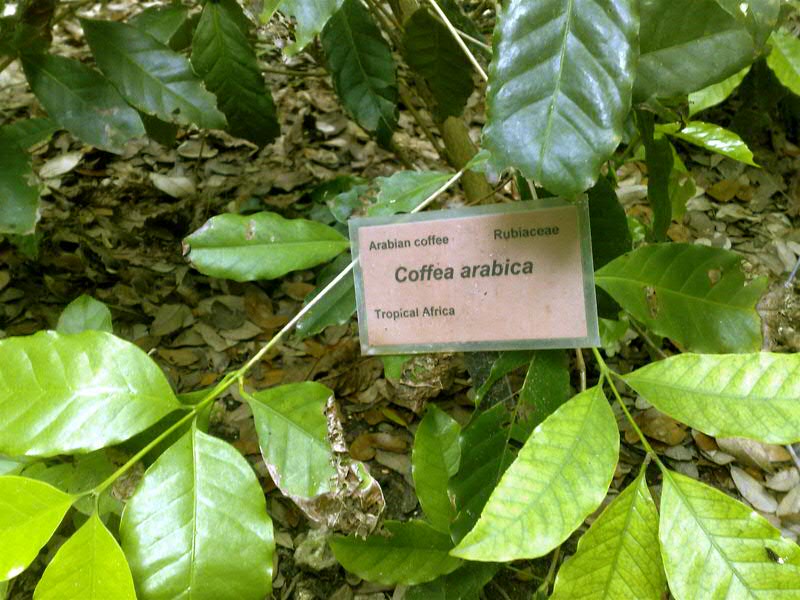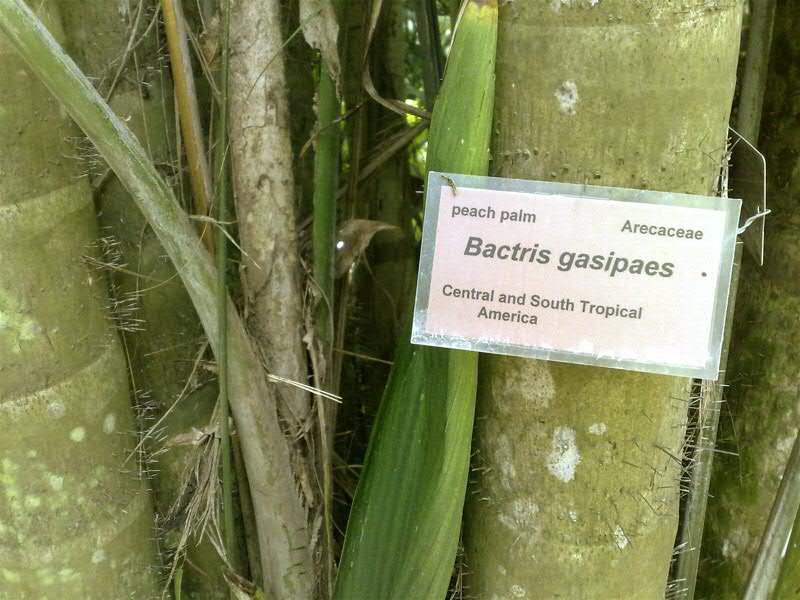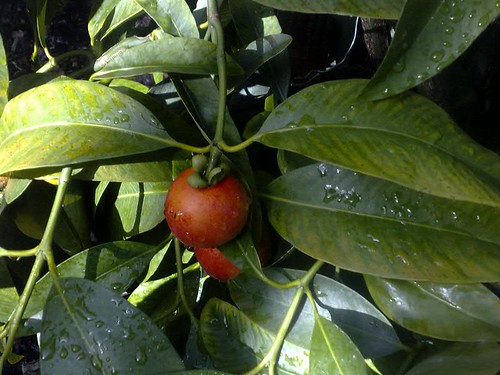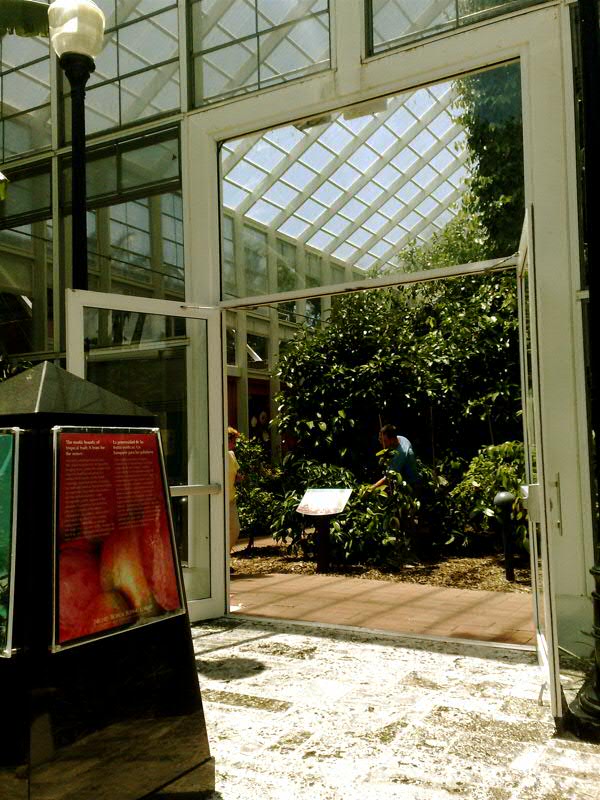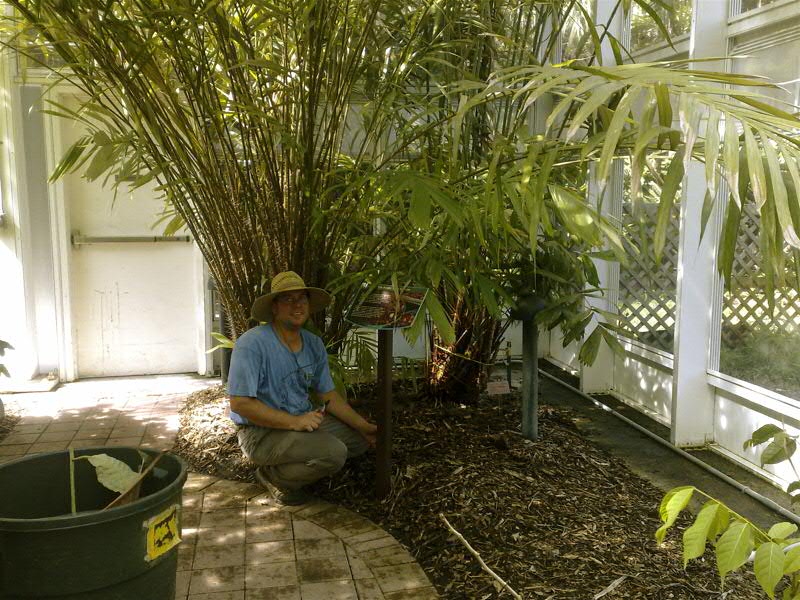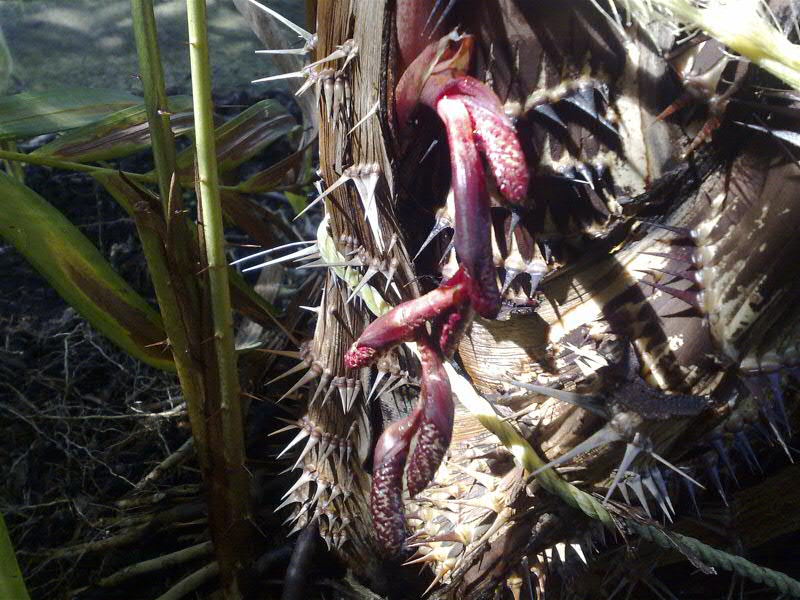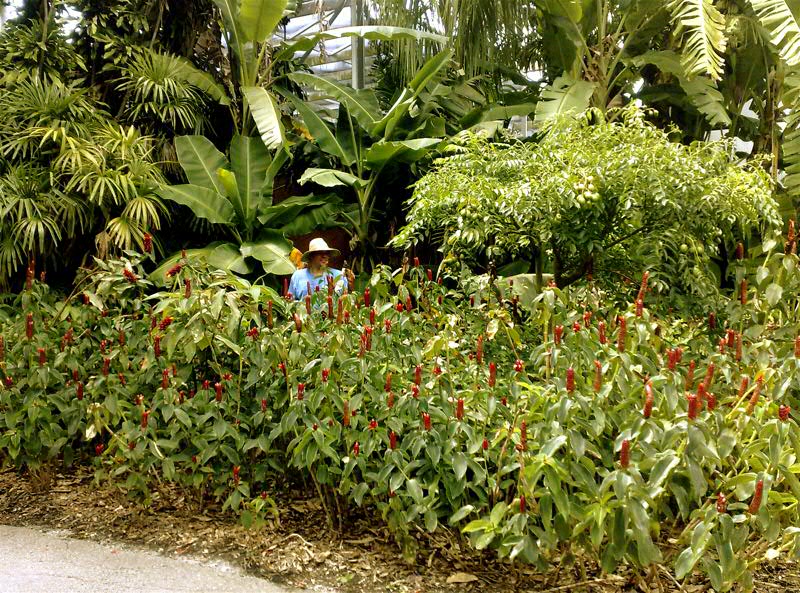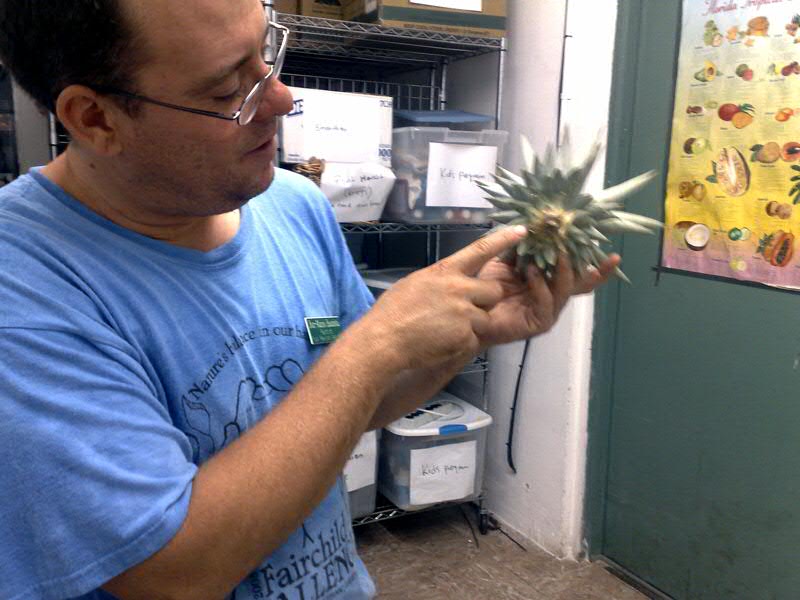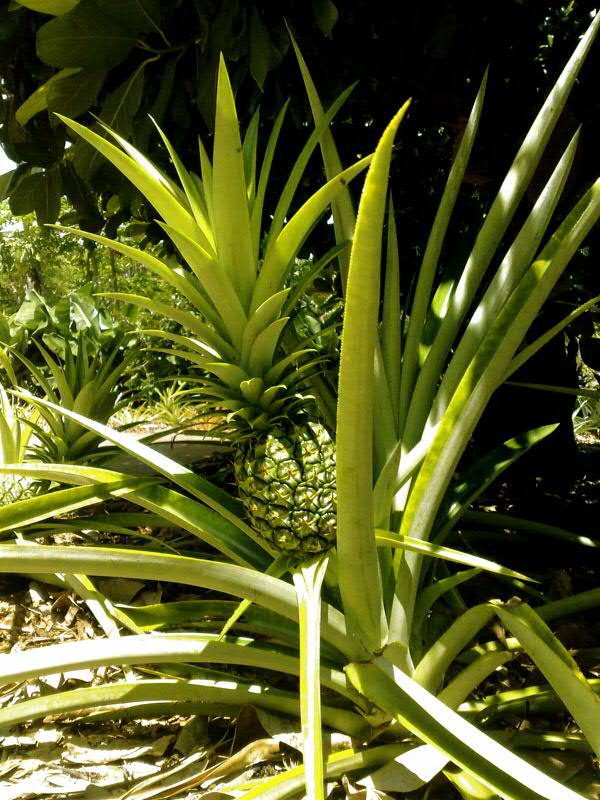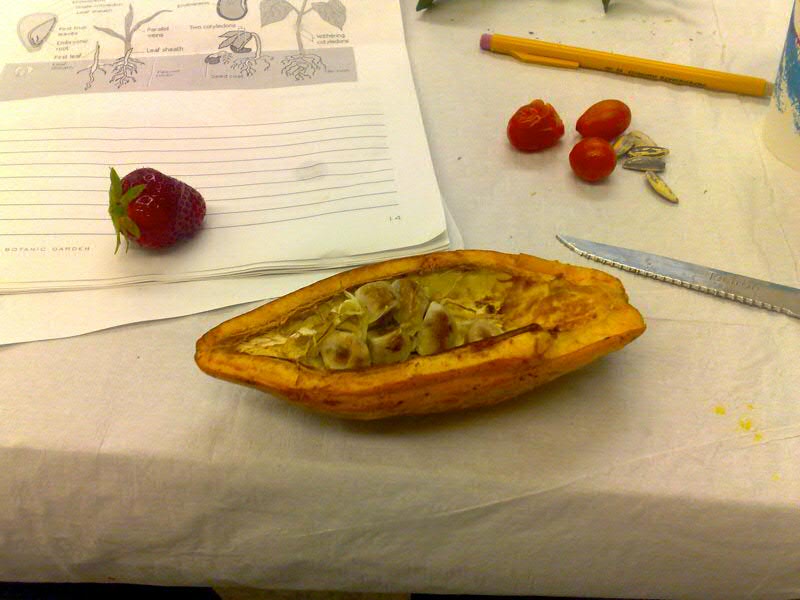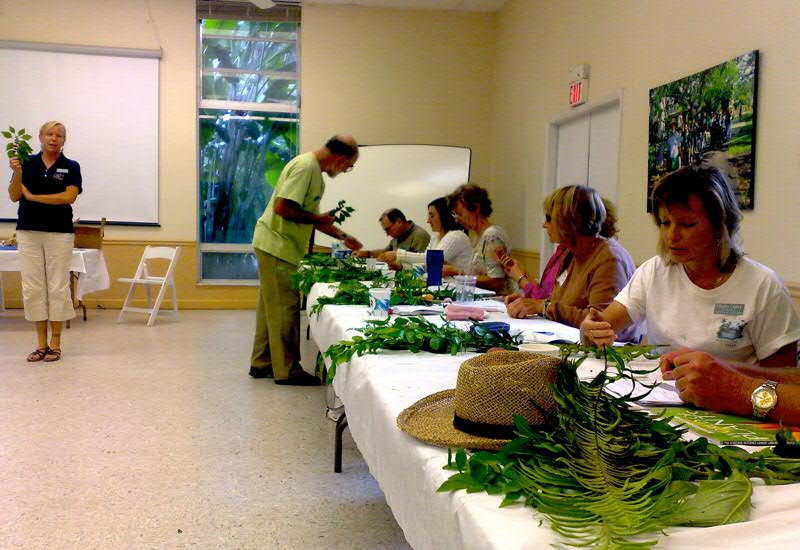This rambutan tree inside the fruit pavilion is just beginning to flower, but has yet to bear fruit. Jon tells me it could take a few cycles before the tree bears "quality" fruit.
June 28, 2008
Lunchtime Lecture Series for Gardeners
July 1DETAILS
Historic Herbs-Theater
Miguel A. Cisneros of the Redland Fruit and Spice Park and the Redland Evening Herbal Society shares an interactive presentation on various herbs, their medicinal uses and what to plant at home to relieve what ails you. Additionally, sharing her knowledge of the historic use of herbs in Florida’s prehistory will be Dr. Michelle Williams, Director of the S.E. Region Public Archaeology Network.
September 2
South Florida Gardening Then
Join the Miami Herald’s guru Georgia Tasker for two presentations that show us how growing and gardening have shaped our heritage. Our history is filled with famous Floridians who changed our habitat by sharing and collecting plants and exchanging them with each other, changing the landscape of Florida forever.
October 7
South Florida Gardening Now
With water concerns and climate change in mind, we take a look at the future of South Florida gardening in a brand new light.
Historical Museum of Southern Florida (except when noted)
101 West Flagler Street Downtown Miami
HMSF Members Free
Non-Members $5
Bring your own lunch; the museum provides coffee and dessert. No reservations are required but space is limited.
More information at Member Services at 305.375.5356.
June 27, 2008
Volunteering - June 27
Today, another volunteer named Gonzalo and I helped Jon mulch inside the fruit pavilion. Gonzalo and Jon filled the wheelbarrows with mulch while I raked and spread it out over the dirt. It was quite physically challenging, especially when when the thermometer hit 100 degrees Fahrenheit ... 100 degrees at 10 am!
Needless to say, I skipped the gym today. I got my workout gardening.
Mulching is important because it helps keep moisture on the ground. (We had to make sure we didn't spread mulch over the ground sprinklers though.) As the leaves and bark decompose, the soil receives extra nutrients. A fresh layer of mulch is also more aesthetically pleasing to the eye. The pavilion grounds now look beautiful and ready for the Mango Festival next month.
By the time we were done, there was an invigorating earthy smell in the pavilion, a wet soil scent with hints of pine.
June 26, 2008
Talipot Palm
"This colossal palm has a trunk that grows up to 80 feet tall, leaves to 16 feet across, and the largest flower cluster in the plant kingdom. The leaves, used as parasols and umbrellas, are large enough to shelter seven or eight people. When the plant reaches maturity at twenty to eighty years, the tree begins producing somewhat smaller leaves and develops a gigantic flowerstalk at the very top. Ten to twelve months later up to a ton of mature seeds are scattered as the tree dies."
The Talipot is native to India and Sri Lanka. Fairchild's specimen is already in the process of dying.
Economic Botany Class
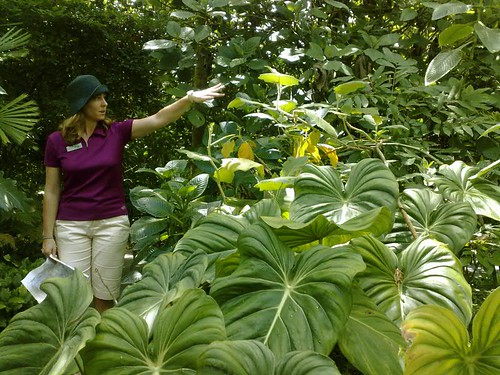 Teacher Theresa Chormanski points out a lulo fruit plant in the rain forest section of the garden. It's the plant directly behind the big leaves.
Teacher Theresa Chormanski points out a lulo fruit plant in the rain forest section of the garden. It's the plant directly behind the big leaves.This past Tuesday, I took a two-hour Economic Botany class at Fairchild. Economic Botany is basically the study of how people use plants. The class started with a lecture, followed by a tasting of various fruits. Afterwards, we walked outdoors to identify some specimens in the garden.
Our teacher was Theresa Chormanski, Education Outreach Coordinator at Fairchild. Another Outreach Coordinator, Nicole Gerard, talked to us about Fair Trade.
Theresa made some interesting observations about Miami's school children. "Many Miami students tell me I didn't even know you could eat plants," she said. "Miami school children can look at a plant but not ever imagine, for example, that a pineapple could come from it."
That's quite a shocker, isn't it? Makes you wonder what they're serving in Miami-Dade public school these days -- not just in the cafeteria but in the science curriculum.
Here are some of my notes from the class:

- Economic Botany is really very much a part of our lives; it's just that there's so much we sometimes take for granted. Theresa mentioned a quote from Martin Luther King: "Before you've finished your breakfast in the morning, you'll have relied on half the world."
- Some indigenous cultures have been using plants for centuries with no written record. The US Government and WR Grace once applied for a Neem tree patent with the European Patent Office but lost because it was considered biopiracy to commercialize this traditional medicinal tree from India.
- Medicine and botany have always been intimately related. 1/4 of all drugs are based on plants. I already knew about herbal remedies and supplements gingko biloba, St. John's wort and echinacea, but I didn't know that aspirin was originally crushed willow bark. Pharmaceutical companies get a bad rap, but it's important to isolate chemical compounds so that natural resources don't have to be depleted.
- Florida's own Saw Palmetto is a popular herbal remedy for urinary problems associated with prostate enlargement.
- Moringa hildebrandtii is an amazing resource from Madagascar. The tree is extinct in the wild but is cultivated widely. The dried leaves have 7 x more vitamin C than oranges, 3 x more potassium than bananas, 4 x more calcium than milk, 4 x more Vitamin A than carrots and 2 x more protein than milk. The seeds produce a high quality oil for consumption or burning. The seeds, when ground, also act as a water purifier. This tree could provide important nutrition to cultures whose diets rely heavily on starchy vegetables like yucca or cassava.
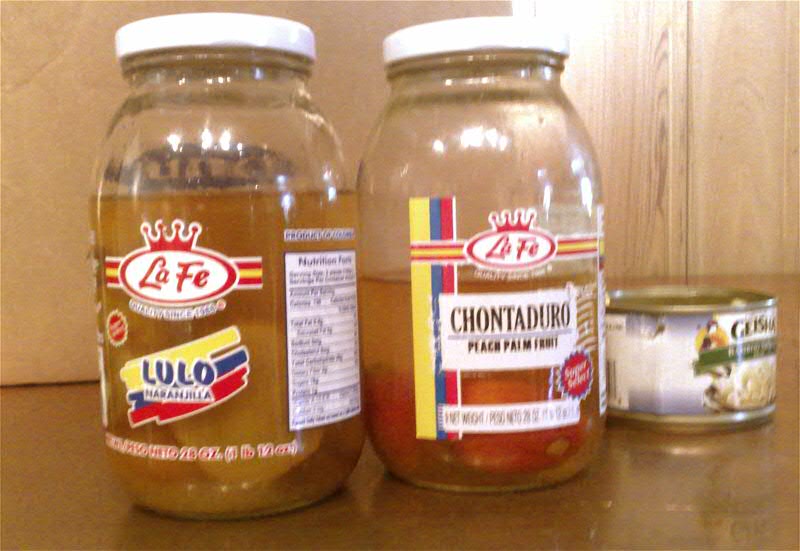 Lulo and Peach Palm fruit are available in the Latin foods section at Publix. The La Fé products were from Columbia. Both fruits are prepared in sweet syrup.
Lulo and Peach Palm fruit are available in the Latin foods section at Publix. The La Fé products were from Columbia. Both fruits are prepared in sweet syrup.There are dozens of specimens at Fairchild that have food, medicinal or cosmetic uses. Theresa gave us a chart that listed which plots in the garden feature each plant. We only saw a few of them but I would love to spot the cashew and the frankincense. Some plants I already know by heart. The vanilla orchid is right at one of the entrances of the rain forest, midway up a palm tree. My favorite plant -- the ylang ylang tree -- thrives in two places, one by the visitor's center and the other in the rain forest.
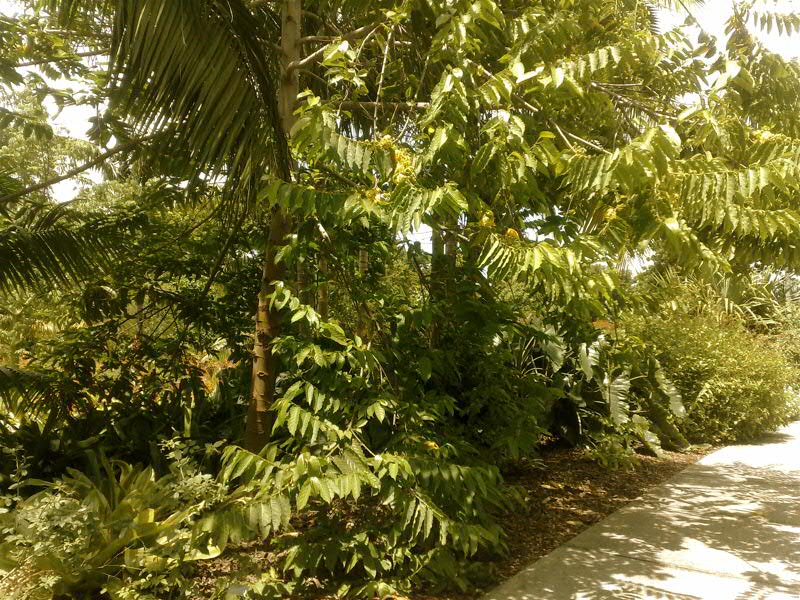 An ylang-ylang tree by the visitor's center. The oil from the flower is used as the base scent in Chanel No. 5. The scent is divine; it makes me swoon!
An ylang-ylang tree by the visitor's center. The oil from the flower is used as the base scent in Chanel No. 5. The scent is divine; it makes me swoon! A tomato hornworm chews the underside of a lulo plant leaf, which is very soft and downy to the touch.
A tomato hornworm chews the underside of a lulo plant leaf, which is very soft and downy to the touch.June 23, 2008
Mangosteen
A mangosteen (Garcinia mangostana) variety growing in the tropical fruit pavilion. Mangosteen has no botanical relationship to mango. I tried one of these and it had a tart flavor; the flesh around the seed had the consistency of an orange crossed with a peach.
Fruit Pavilion - June 20
My first day of volunteering was a great experience. I met with Jon-Mario Bautista, manager of the Whitman Tropical Fruit Pavilion around 9 am and we worked together until about 12:30.
According to Fairchild's website, the fruit pavilion is the first of its kind in the United States:
The Whitman Tropical Fruit Pavilion provides visitors with a trip to the tropics where they will be able to view, feel and even possibly taste some of the most exotic tropical fruit species found in places like Borneo, the Amazon, Indonesia, Thailand and Malaysia. Our pavilion was dedicated on November 8, 2003. The pavilion, funded by a five million dollar donation from the Whitman family, features specially chosen and grafted trees that will allow them to fruit earlier, with superior quality, making them horticulturally significant from their wild counterparts.
Our first task in this special place was to clear the grounds of fallen leaves. I thought it would be extremely hot and buggy, but somehow it was bearable. Even though the thermometer read 100 degrees Fahrenheit, the air circulated because of fans and screened windows. And as for the mosquitoes, there were very few.
After about an hour of clean-up, Jon and I pruned branches that were growing into the path. Our first plant was the chocolate tree, Theobroma cacao. I had to make sure I pruned just above a fresh bud. Next, we moved on to the Salak palm, which produces a fruit that's popular in Indonesia. This thorny palm doesn't have a single trunk; rather, it has several that tend to be top heavy and droop, so the plant has to be bound at the base. I discovered some new fruit growing at the base of one of the Salaks.
 Ouch! Jon wasn't wearing gloves, but I was. Not that it mattered -- the thorns will pierce even the toughest fabric.
Ouch! Jon wasn't wearing gloves, but I was. Not that it mattered -- the thorns will pierce even the toughest fabric.Next, Jon and I moved on to the outside, where we spent some time removing dead leaves and flowers from the Red Button Ginger. While we were engaged in this task, Mike Maunder, PhD, the garden's Executive Director, drove by on a golf cart and stopped to say hello. He was very personable and welcomed me to the family.
Later, we removed some weeds from around the pineapple. I was rewarded for my work with a taste of a fresh, ripe pineapple Jon had picked from the grounds recently. It was the most delicious pineapple I have ever had! Juicy, meaty and not overly-sweet -- it was just right. I had been regaling Jon with tales of my trip to Grenada, and so maybe it was all the talk about nutmeg that made me swear there were hints of spice in the pineapple.
Most people would probably shy away from this kind of work, especially in the middle of the summer in Miami, but for me, it's also a spiritual practice that works on so many levels. Connecting with nature is very grounding. In this crazy, hectic world we live in, a sense of "groundedness" is something I have to take time to cultivate. It helps me get out of my head and into my body, which is the best way to deal with stress and anxiety. Also, by focusing on one single, simple task at a time, my mind becomes free from worry and in so doing, I create space for more creativity. It seems that gardening is all about working on plants, but in reality, the plants are also working on you.
Taking care of living things helps me appreciate the air in my own lungs. And just the act making one tiny spot on the earth a more beautiful place is reward enough in itself.
When I moved off Miami Beach recently, I left behind a little patch of grass I called my garden. I brought my six orchids with me -- what's left of all the gardens I've had in the past. I feel very fortunate now to have such an incredible garden to take care of, collectively, with others who share the same passion.
To learn more about Fairchild's Tropical Fruit Program, click here.
June 22, 2008
Cannonball Tree
The amazing flower of the "Cannonball Tree" (Couroupita guianensis) grows off branches that look like vines.
June 14, 2008
Basic Botany Course
This weekend I took a Basic Botany Course at Fairchild. These free classes are for volunteers and staff only. We’re encouraged to take them so that we can learn more about plants. (There are other classes for the public at the garden too.)
The class ran from 9:30 am to 4 pm with a 1/2 hour lunch break. We got a hand-out and learned through lecture time, hands-on “dissection” and examination of plants as well as a little field trip out in the garden. Our instructors were Gillian Drake, Youth Education Manager and Jack B. Fisher, Senior Research Scientist and Administrator of Graduate Studies.
The class was very casual, fun and great way to refresh my memory about anything I might’ve learned in high school biology.
We focused mainly on the different parts of plants, the classification of leaves, plant reproduction and flowers. We also talked about the naming of plants, the use of Latin and how to interpret plant labels in the garden.
Kitchen Botany was particularly interesting. There was so much I didn’t know or had never thought about ... it left me stumped! Many of the categories assigned to plants at the supermarket are not accurate, botanically speaking.
For example, a potato is technically a stem, not a root. Ditto for ginger. And a celery stalk is really a leaf. Onion and garlic are bulbs and the part we eat are leaves. The only easy one to guess was broccoli—the part we consume is the flower (actually it’s many little flowers).
 Dioscorea looks like a rock, but it's actually a plant!
Dioscorea looks like a rock, but it's actually a plant!
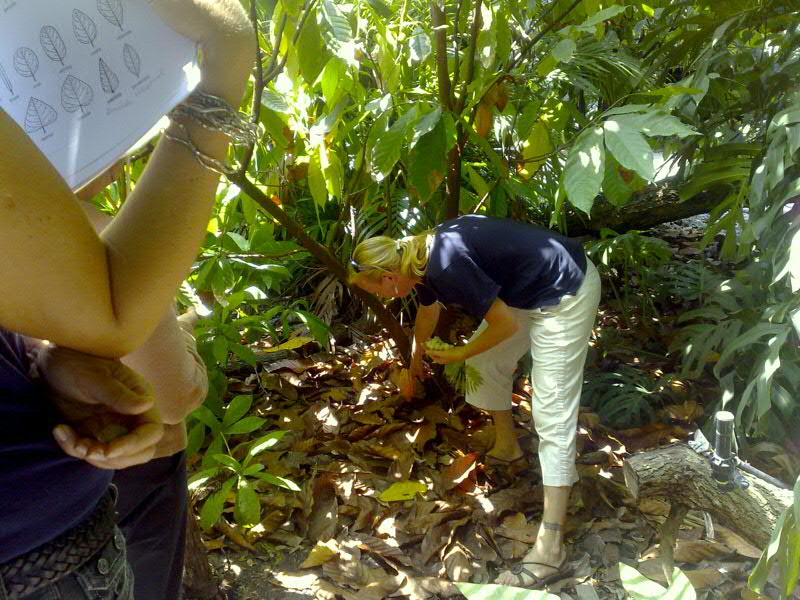 Picking a ripe Theobroma cacao in the rain forest section of the garden.
Picking a ripe Theobroma cacao in the rain forest section of the garden.
June 13, 2008
Volunteering at Fairchild
Today I signed up for volunteering at Fairchild Tropical Botanic Garden, one of my favorite places in Miami.
The garden isn’t just a beautiful place, but also a non-profit that operates as an international center for the scientific study and conservation of tropical plants. During the cooler months, Fairchild offers an art season; this year featured outdoor sculptures by Botero, Lichtenstein and Chihuly.
I will start next week volunteering at the tropical fruit pavilion but first I’ll have the chance to take an all-day basic botany class. Mid-July, I’ll be working at the Mango Festival.
Helping with the fruit section of the park will be challenging because it’s so hot in the summer months. A lot of it will be routine work: weeding, raking leaves, pruning, fertilizing and so on. But some of it will involve grafting and propagating, as well as interacting with guests and talking about tropical fruits and plants. I hope to learn a lot about fruits like durian, jackfruit, malay apple, mangosteen, carambola, guava, pineapple and many more.
I don’t mind the grunt work because I’m doing a lot of writing right now so the hands-on activity is a wonderful way to get in touch with nature and do something non-cerebral. For me, gardening is always meditative and peaceful. I also love the fact that I can give back to the community and contribute to a non-profit while doing something that’s personally rewarding.
One of the great things about living here is that you can garden year-round. We don’t have drastic seasonal changes like up north, but we do have many subtle changes, blooming periods and microclimates that you come to appreciate the more involved you get in horticulture.
The garden’s volunteering community seems to be like one big family, so I look forward to getting to know everyone. Last year, 550 volunteers contributed a total of 65,000 hours!
I also expressed interest in working at the nursery facility and with children’s education programs in the future.
There’s a lifetime of rewarding experiences to look forward to!





